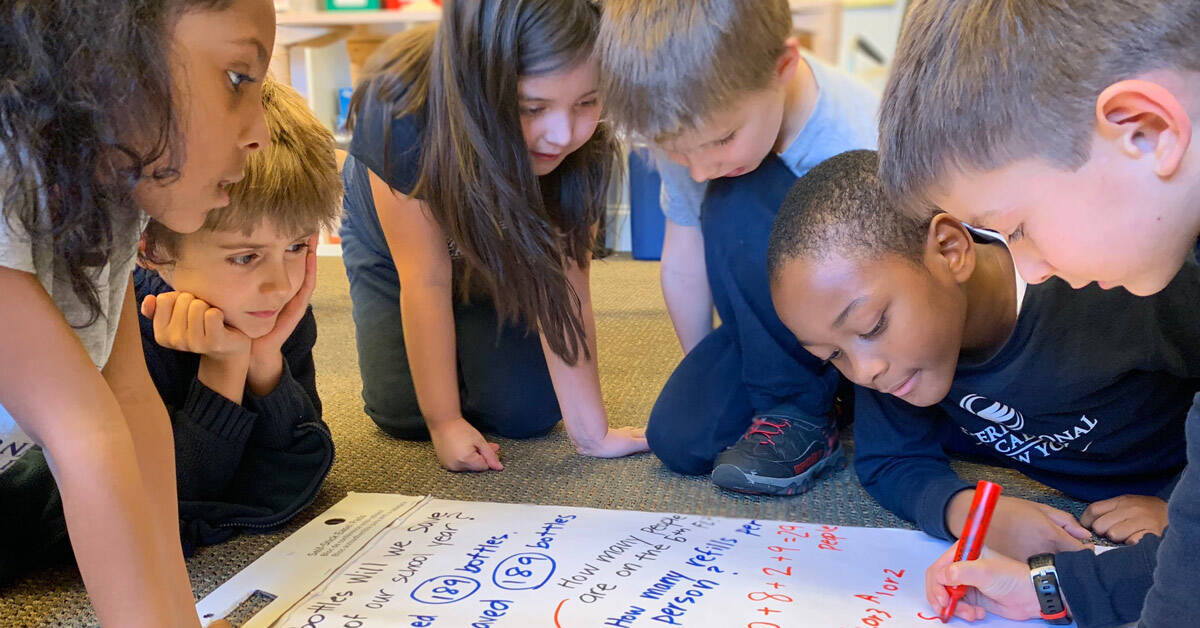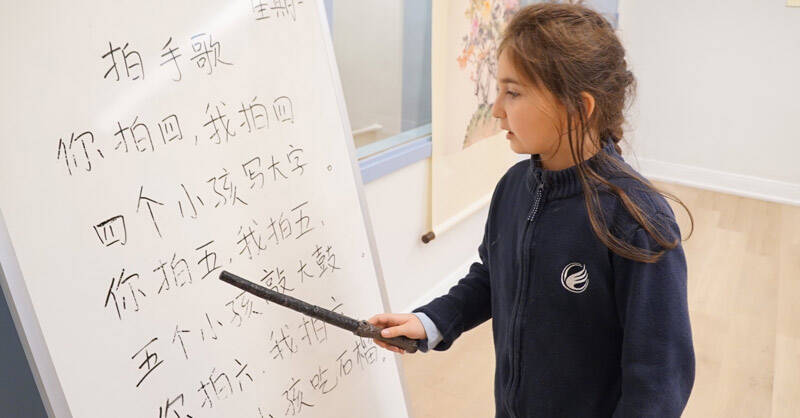
Choosing the right school for your kids can be nerve-racking—whether you’re just moving to New York City or trying to figure out your family’s educational path. Even though our children live in a digitally connected world, they can still feel disconnected and out of place. An international school can be the perfect place to hone your child’s sense of identity and belonging.
The Benefits of an International School
Now, that may seem counter-intuitive: If my child is one of only a few from a certain background, how will he/she feel connected? However, an international school encourages acceptance and empathy by exposing students to a wider degree of multiculturalism. At an international school, there is a dedication to global awareness, and speaking different languages is celebrated and encouraged. This cultural acuity turns into compassion—something we could certainly use more of these days. It also fosters confidence, strong communication skills, and flexibility of thinking, while opening many doors to opportunity.
Choosing the Right School
Not all international schools are alike, and it’s important to find one whose mission is deeply rooted in nurturing a multicultural community. Don’t judge a school only by the statistics of its student body—truly global schools also have international faculty. Multiculturalism should be evident in the fabric of the school, including the art on the walls and the entire curriculum.
An international school should devote a significant amount of time to teaching a second language. Language is never easier to learn than in childhood, and the benefits are lifelong. Children who understand more than one language can focus for up to twenty percent longer than their monolingual classmates. They can more readily figure out the meaning of a new word in any language. They have improved memory, problem-solving abilities, and critical thinking skills. And when standardized tests come around, bilingual students score significantly higher in both language and math.
Finally, New York City is a melting pot—a simple errand around the corner reminds us of the need for cultural competence. Our children, who are hearing multiple languages and surrounded by many different cultures, need to be able to understand their world. An international school provides the curriculum, art, field trips, books, etc. that will answer all their questions. For a child (and that child’s family), a school environment that acknowledges and celebrates our differences can be a significant source of comfort and a great foundation for learning.

Why is Diversity Important in Schools?
This Section is by Edward Remache
I am a parent in a multi-racial family in New York. When I looked at schools for my children, I found that many independent schools checked the boxes of devoted teachers, challenging academics, and exceptional language or science or arts programs. But I also wanted a vibrantly diverse community for my children and for my family—a place where everyone can feel seen and understood for who they are rather than labeled in one category or another. I wanted a school that fostered culturally competent, open-minded, empathetic people—true global citizens.
You might think that the schools in “America’s Melting Pot” would be just as diverse as its population. Unfortunately, for many public and private schools, that’s not the case. In fact many schools that talk about diversity don’t actually embody diversity.
Many schools enroll students with different skin tones, but true diversity includes differences in race, ethnicity, socioeconomics, religion, sexual orientation, family structure, learning abilities, etc. And this kind of truly diverse environment makes people work better, learn better, and, frankly, become better humans. It’s also the best environment for school-aged children. Just like learning another language, the earlier a person experiences a diverse peer group, the faster they learn to accept difference without the fear and implicit bias that we adults collect over the years.
Students in a diverse school are exposed to the differences that make our world whole. They learn to appreciate and respect what others bring to the table, and in the process of understanding others, they are also learning about themselves. In the end, they are not just fostering empathy for others, but they are also building self-confidence.
Research has shown that diversity in a school increases the following abilities:
- heightened creativity
- critical thinking
- greater motivation
- deeper collaboration
Diversity must also extend beyond the student body. When a child sees teachers and school administrators who are similar to them, that child can feel understood and safe. A sense of belonging and trust is the canvas for confident, deep learning.
School leaders and curriculum writers need to look around and ask the questions: How diverse are our teachers? What are they teaching? How are they teaching? What does the art on the walls say about our community? What about the music being played in the classrooms, or the books being assigned and read? Who is being represented and whose voices are not being heard?
Nasreen Ikram Hussain, the Head of School at the International Academy of New York (where I enrolled my children) says, “a school that really lives diversity allows the child to be awake to the differences in the world, creating real life contexts that ground young people in meaning and empathy.” That meaning and empathy is the stuff of future leaders.
Browse through the magazine version of the International Academy New York Guide to Choosing an International School.
The Benefits of Being Bilingual
Most of the modern world speaks more than one language. In the United States, one out of five households speak a language other than English. This is why one of the most important skills in the twenty-first century is bilingualism.
But this isn’t just about communication—speaking two (or more) languages can actually make you smarter. Think about it: A bilingual person who has to switch languages regularly has to be continuously monitoring the moment. It’s a workout! This constant exercise for the brain helps it manage complexities, solve problems, and maintain focus. It also increases English literacy skills and academic performances. Amazingly, bilingualists also have a reduced chance of developing age-related dementia or Alzheimer’s Disease.

And while these positive aspects apply to both adults and kids, it’s much easier to learn a new language at a young age. There’s less inhibition and children are more likely to accurately form the sounds and follow the rhythms. Also, children who learn another language tend to develop more empathy. Because they are using social cues to understand what language to use in any given situation, they are developing a natural comfort with diversity.
True bilingualism is achieved through repeated exposure—not just a language class here and there, but by immersion with an adult who is a native speaker. International schools that have a solid dual language program beginning in early childhood, are the ideal way to foster bilingualism. They introduce students to a language across different subjects, which gives them a greater appreciation for that language and its culture.
A bilingual education is a gift to a child—a gift of lifelong, transcultural understanding and the ability to communicate, live, or work around the world.
The Benefits of a Small Class Size
The pandemic forced many schools into a hybrid learning mode—which meant smaller class sizes, a model that some schools have touted way before COIVD. Schools like The International Academy of New York have long maintained smaller class sizes of ten or fewer students, which has been enormously advantageous for students, teachers, and parents.
In addition, IANY ascribes to a small student-teacher ratio. The larger classes, those with 16-20 students, have more than one teacher. Some larger classes also split into smaller groups for certain subjects. This creates an intimate setting for students—a benefit many parents are looking for in a school.
In a nutshell, the benefit of a smaller class size is more one-to-one attention—attention to each student, and attention to the subjects being taught. With fewer students to advise, a teacher can tailor their instruction for each student. An advanced student can be challenged, instead of waiting for classmates to catch up. At the same time, a child who may need a little more time won’t be left floundering, because the teacher can give that child attention too. A small class size allows teachers to dive deeply into topics with less disruption, so there’s more opportunity for discussion and for every voice to be heard.

Another benefit of a smaller class size: A teacher will notice cliques or bullying behavior and be able to address the problem immediately. Everyone knows each other and has to figure out how to work together, which is the basis for empathy and teamwork. Also, because every child is fully seen and heard by the teacher and their classmates, there is a sense of safety and belonging. This helps build student confidence. Even shy students will be able to share their thoughts, which they may not do in a larger classroom where there is more competition.
Imagine how much more effective teachers can be when they really know each student in their classroom—their academic strengths, their weaknesses and their emotional barometers. When there’s less disruption, all students can be involved in the discussions, leading to even bigger discoveries. Teachers can do their best work in this kind of environment, which means more job satisfaction, and consequently more inspiration and motivation.
For parents, the benefits of a smaller class size are significant. You know your child won’t get lost in the mix. Teachers will be able to support and challenge every student. And when report cards come out, they will be based on so much more than any state test could ever measure.
The International Academy of New York is a multicultural, diverse independent school for children in preschool through grade five (with middle school planned for the future). As part of the curriculum, every student receives daily instruction in a second language (Chinese or Spanish) through immersion language, music, and art classes. the International Academy of New York approaches students as individuals, preparing them to navigate the world they will inherit with confidence, energy, and resilience.
To learn more, see www.ianyc.org.
To connect directly with the school, please email admissions@ianyc.org or call 212-641-0260.
Like what you read? JOIN the Mommybites community to get the latest on FREE online classes, parenting advice, events, childcare listings, casting calls & raffles, and our Parents With Nannies Facebook group. SIGN UP NOW!



